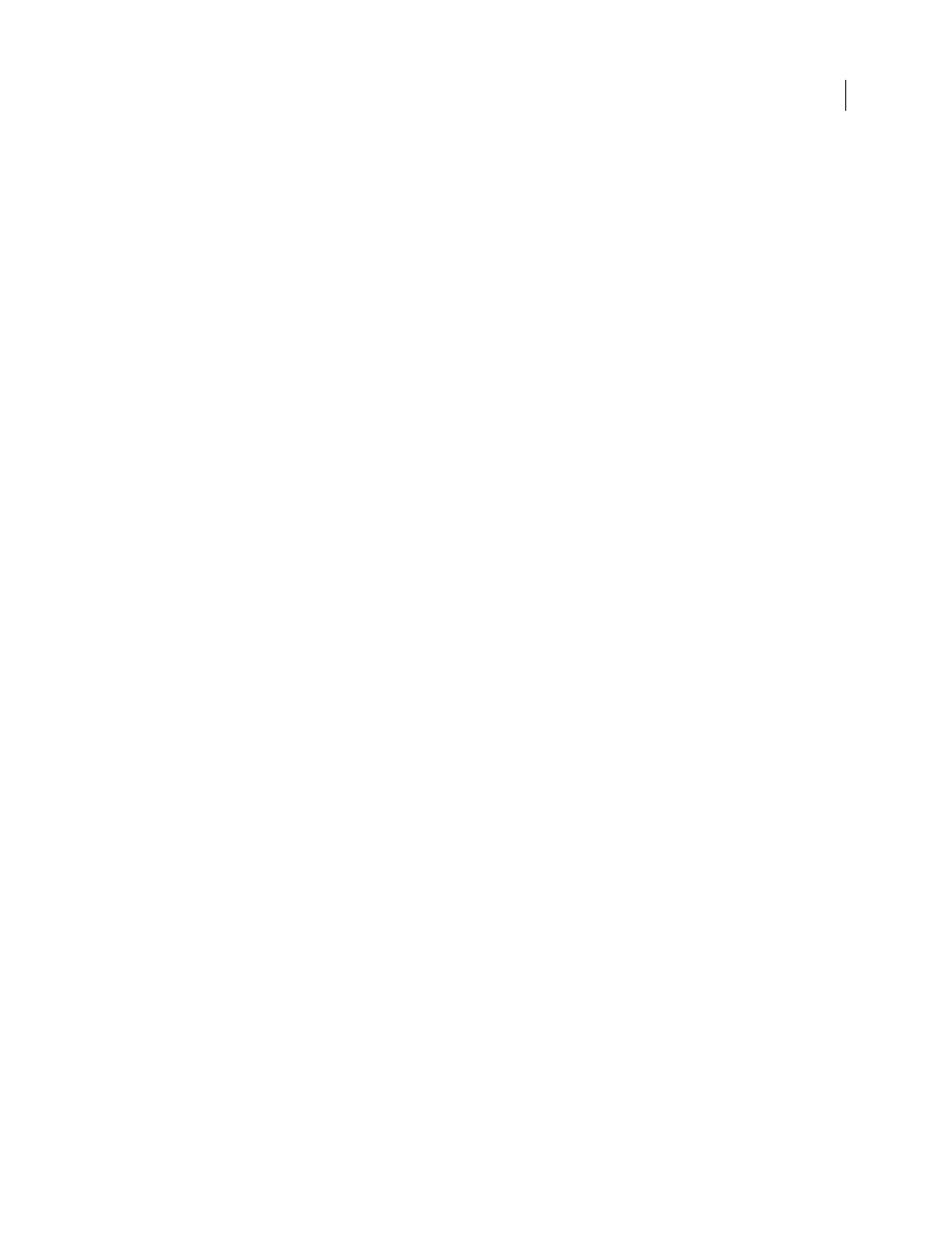About trapping black – Adobe Acrobat 8 3D User Manual
Page 474

467
ADOBE ACROBAT 3D VERSION 8
User Guide
Trapping imported graphics
You can create a trap preset to control traps within images, and to control traps between bitmap images (such as
photographs and those saved in raster PDF files) and vector objects (such as those from a drawing program and
vector PDF files). Each trapping engine handles imported graphics differently. It’s important to be aware of these
differences when setting trapping options.
Trap Placement
Provides options for determining where the trap falls when you trap vector objects (including
objects drawn in InDesign) to bitmap images. All options except Neutral Density create a visually consistent edge.
Center creates a trap that straddles the edge between objects and images. Choke causes objects to overlap the
abutting image. Neutral Density applies the same trapping rules as used elsewhere in the document. Trapping an
object to a photograph with the Neutral Density setting can result in noticeably uneven edges as the trap moves from
one side of the edge to another. Spread causes the bitmap image to overlap the abutting object.
Trap Objects To Images
Ensures that vector objects (such as frames used as keylines) trap to images, using the Trap
Placement settings. If vector objects don’t overlap images in a trapping page range, consider turning this option off
to speed trapping of that page range.
Trap Images To Images
Turns on trapping along the boundary of overlapping or abutting bitmap images. This
feature is on by default.
Trap Images Internally
Turns on trapping among colors within each individual bitmap image (not just where they
touch vector artwork and text). Use this option only for page ranges containing simple, high-contrast images, such
as screen shots or cartoons. Leave it unselected for continuous-tone and other complicated images, as it will create
bad traps. Trapping is faster when this option is unselected.
Trap 1-Bit Images
Ensures that 1-bit images trap to abutting objects. This option doesn’t use the Image Trap
Placement settings, because 1-bit images use only one color. In most cases, leave this option selected. In some cases,
such as with 1-bit images where pixels are widely spaced, selecting this option may darken the image and slow the
trapping.
About trapping black
When creating or editing presets, the value you type for Black Color determines what is considered solid black and
rich black. A rich black is any black color that uses a support screen—additional percentages of one or more process
inks to strengthen the black.
The Black Color setting is useful when you must compensate for extreme dot gain (as when using low-grade paper
stock). These situations cause black percentages lower than 100% to print as solid areas. By screening back blacks or
rich blacks (using tints of solid black) and decreasing the Black Color setting from its default of 100%, you can
compensate for dot gain and ensure that the trapping engine will apply the proper trap width and placement to black
objects.
When a color reaches the Black Color value, the Black trap width value is applied to all abutting colors, and keepaway
traps are applied to rich black areas using the Black trap width value.
If support screens extend all the way to the edge of a black area, any misregistration causes the edges of support
screens to become visible, creating an unwanted halo or distorting the edges of objects. The trapping engine uses a
keepaway, or a holdback, for rich blacks to keep support screens a specified distance away from edges of reversed-out
or light elements in the foreground, so that the light elements retain their sharpness. You control the distance of
support screens from the edges of black areas by specifying the Black trap width value.
Note: Don’t worry that the Black trap width setting will be too wide for trapping thin elements, such as black keylines
around graphics. In those cases, the trapping engine automatically overrides the Black trap width setting and limits the
trap to half the width of the thin element.
